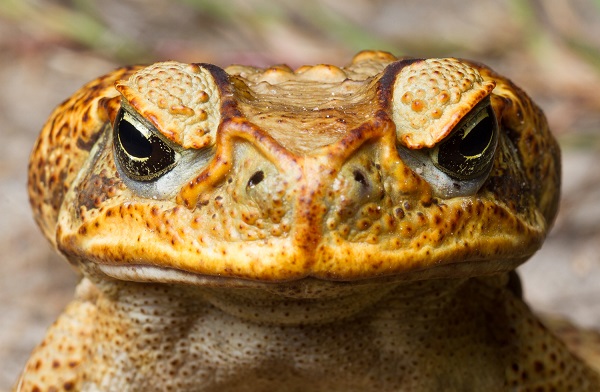
ACT Parks and Conservation is working with residents in the surrounding area to find information about how the cane toads arrived in Canberra. Photos: Supplied by ACT Parks and Conservation.
Canberra locals are being asked to be on the lookout after a member of the public stumbled upon two poisonous rogue cane toads in Campbell last month.
According to an ACT Parks and Conservation spokesperson, a Campbell resident came across the two adult cane toads near Rosenthal Street in mid-September, who then captured the toads and reported it to the conservation.
ACT Parks and Conservation director Daniel Iglesias said the toads have been positively identified by the ACT Government biosecurity vet but believe it is a contained incident. Mr Iglesisas believes the two toads may have inadvertently hitched a ride to Canberra from Queensland on a vehicle but is still urging Canberrans to be on the lookout.
“It is highly unlikely a cane toad population would establish this far south due to Canberra’s cold winter climate, but they could survive in our warmer months,” he said. “They pose a threat to native and domestic animals so we are treating it seriously and working with the community to find any other cane toads if there are any.”
ACT Parks and Conservation is working with residents in the surrounding area to find any information about how the cane toads travelled to the ACT while rangers have begun their search of the surrounding area and parklands. A letterbox drop has also been undertaken in the vicinity of where the cane toads were found.
Cane toads pose a threat to native and domestic animals due to their toxicity and can also out-compete native species for food and habitat, making them a threat to biodiversity.
“We do not want cane toads in the ACT. They are a threat to biodiversity and wherever they establish, they compete with native species for both food and habitat,” Mr Iglesias said.
“They are toxic at all stages of their life cycle from eggs to tadpoles to adults. Their toxin is strong enough to kill most native animals that prey on frogs or toads and their eggs, such as birds, other frogs, reptiles and mammals, including some of our threatened species. They also pose a threat to pets such as dogs and cats so I urge pet owners in Campbell to be particularly vigilant in the coming weeks.”
The ACT Parks and Conservation director is warning people travelling from the surrounding states and territories to be vigilant and make sure they are not transporting the unwanted amphibian.
“People travelling from Queensland, Northern Territory and northern NSW should be particularly vigilant that they are not giving a cane toad a lift in their car, trailer or plant material. We all have a shared responsibility when it comes to biosecurity and keeping our bush capital safe from threats,” Mr Iglesias said.
How do you identify a cane toad?

Cane toads are large with dry warty skin. They can be grey, yellowish, olive-brown or reddish-brown and their bellies are pale with dark mottling. Average sized adults are 10-15 cm long. They have a bony head and over their eyes are bony ridges that meet above the nose.
What if you think you see one?
- DO NOT KILL IT it as it is most likely a native frog
- Exercise caution and take a close-up photograph
- Wearing rubber gloves and eye protection put into a well-ventilated container with 1cm of water
- Email [email protected] or phone Access Canberra on 13 22 81.
Original Article published by Lachlan Roberts on the RiotACT.








